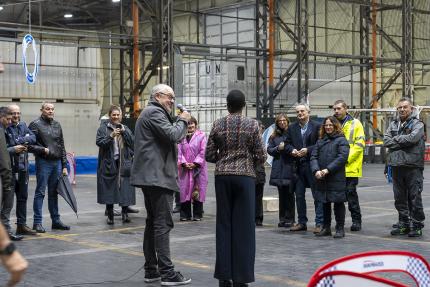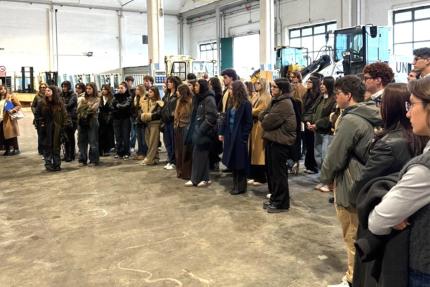Uncrewed Aircraft Systems (UAS): A Force Multiplier for Peace and Humanitarian Efforts
The use of UAS by military forces increased globally over the past decades, with numerous countries, as well as non-State armed groups, adopting or expanding their UAS fleets, according to the Center for Strategic & International Studies.[1] However, in the context of peace operations, their use was minimal, due, in part, to their prohibitive cost.
Fortunately, in recent years, technological advances, and the proliferation of micro-UAS in the commercial sector, along with cost reduction, have facilitated greater access to United Nations actors. From only a few UAS purchased by individual UN peacekeeping missions prior to 2019, there are now over 500 in utilization across the UN’s field operations globally.
These transformative technological tools are enhancing the UN’s capabilities in vital areas ranging from the protection of civilians and UN personnel to conflict early warning, situational awareness, search and rescue, medicine and vaccine delivery, damage assessment, or infrastructure rebuilding, among others. UAS also represent a significant savings in cost, both at the initial investment stage, and operationally, over time, compared to helicopters and other aerial support. "Air operations are a key component of peacekeeping and humanitarian operations,” remarked Samuel Leal, Chief of Technology Development, Design, and Planning at the United Nations Global Service Centre (UNGSC). “A 'view from the top' significantly enhances situational awareness and facilitates reporting and planning. In the past, this capability was limited due to the high cost and availability of air assets. The advent of UAS, particularly mini and micro UAS, unlocked this capability to field operators."
A key enabler of this deployment across the UN is the UAS service provided by UNGSC. As part of the United Nations Department of Operational Support, Office of Supply Chain Management, UNGSC provides customized services to address the needs of peace operations and other field missions worldwide. In the case of UAS, this implies supporting procurement processes to ensure the UAS meet UN field specifications; knowledge management across the UN system; as well as hands-on training, tailored to the theatre of operations, delivered in partnership with the UNC4ISR[2] Academy for Peace Operations.
In 2023 alone, “UNGSC provided 7 Class I UAS training courses, resulting in 12 trainers, 32 operators and 17 assistants, as well as 26 operators qualified in advanced UAS training, or a total of 87 people,” noted Arturo Ojeda, UAS and PKISR specialist. “These individuals will bring their knowledge to all future missions to which they are deployed, building capacity across the UN.”
While UNGSC’s training was initially focused on peacekeepers, other UN actors in the humanitarian and development areas are increasingly expressing interest and witnessing palpable benefits.
The World Food Programme (WFP) UAS Programme Manager, Elizabeth Bourke, explained: "UAS have been a game changer for humanitarian response operations, whether for searching for missing personnel, identifying damaged buildings, or providing temporary communications in emergency situations. UNGSC has supported WFP by delivering the ‘UAS training for trainers’ course in November 2021, in Mozambique,” Bourke continued. “The course enabled WFP to support the Mozambique National Institute for Disaster Management to train their own in-house trainers, providing a home-grown and sustainable capability for disaster response."
With each training, new use cases for UAS are discovered, adding to the versatility of the technology. “Looking to the future,” Stephen O’Sullivan, Chief, Technology Development Unit, shared, “UAS may acquire greater capacity for mine detection, AI integration to detect security threats, more endurance with longer-lasting batteries, automated flight patterns, and new sensors enabling them to conduct more activities in both indoor and outdoor settings.”
As UNGSC continues to build a repository of information and contributes to the development of comprehensive policies governing UAS’ usage, the potential to save lives and serve the UN’s operational needs in the most critical of circumstances is promising.
To learn more, contact osullivan3@un.org or arturo.ojedademaria@un.org.


